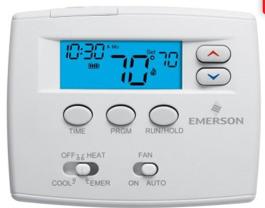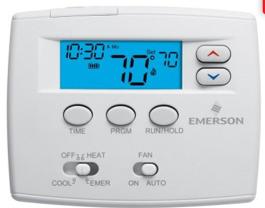The auxiliary heating system is a backup heating system that activates automatically when the demand for heat is more, providing supplementary heat to the heat pump’s target area (house). Keep reading to know more about the importance and working of auxiliary heat systems.

Table of Contents
What is Auxiliary Heat?
It’s a backup heating system that activates automatically to maintain the temperature of the house (heater’s target area).
In other words, when the heat pump by itself is unable to meet the heating requirements, auxiliary heat automatically turns on.
It starts working when there is a sudden temperature drop of more than two degrees.

Important Points
- Backup heating system.
- Works with an electric resistance heating system.
- Must be only used in an emergency.
- Expensive source of heating.
- Should be used only when the heat pump malfunctions.
Why Auxiliary Heat Is Important?
Normally a heating pump system utilizes a heat pump as a primary source of heat for the house.
Emergency heat works during special situations, for instance:
- Failure of the compressor of the heat pump or other similar issues.
- A sudden drop in temperature.
- The user manually activates it to increase the temperature of the thermostat.
How does it Work?
The auxiliary heating system works with an electric resistance heating element. However, it works only in an emergency situation.
This system is typically bundled along with the heating pump in the heating system.
It activates itself when the user manually increases the set temperature of the thermostat by two degrees or more than the current room temperature.
Once the target temperature is achieved, auxiliary heat deactivates, allowing the heat pump continues to work without assistance.
Is Auxiliary Heat the Same as Emergency Heat?
As the name itself suggest, emergency heat is meant to be used in an emergency.
When activated, it is indicated on the digital display.
When a system is put on an emergency heat mode, the heat pump is shut off and completely bypassed.
Therefore, the entire task of heating the house is undertaken by the electric resistance heater alone.
Is Auxiliary Heat More Expensive?
Many people use their heat pump systems by always activating the emergency system on the thermostat, this is the wrong way to use it, though it still provides the heating for the home.
Running the heating system on the emergency mode keeps emergency heat stays on always while the main heat pump stays off.
As a result, the electric heater will have to work overtime and it will use a lot of electricity. This will culminate and the user will have to pay unnecessary electricity bills.
If you find that some instrument is malfunctioning causing your system to frequently turn on auxiliary heat, you must have it inspected because it will cost you more in terms of power bills.
Important Links
Summary
Auxiliary heat provides the required additional heat thus supplementing the heat pump.
In other words, it’s a backup heating system that activates automatically to maintain the temperature of the house (heater’s target area).
However, it’s an expensive source of heat and It should be used solely when the heat pump malfunctions.
Frequently Asked Questions (FAQs)
1. What is heat flux?
The quantity of heat transferred per unit area per unit time to or from a surface is referred to as heat flux.
It is the amount of heat transfer per unit time and the area from/to which this heat transfer takes place.
2. What is thermite welding?
Thermite welding is a type of welding that involves reducing metal oxides with aluminum powder and releasing a large quantity of heat. Thermit reaction is used to repair railway rails or broken machine components.
This heating system activates automatically when the demand for heat is more, providing supplementary heat to the heat pump’s target area (house).
This system can handle more extreme temperatures since it uses electric heat strips. Therefore, it is more expensive than the conventional heat provided by a heat pump
It is an automatic system, it gets on when the heat pump can no longer efficiently transfer heat. It may start when the temperature drops suddenly
More Links
- BCl3 Lewis Structure in four simple steps - November 1, 2023
- PH3 Lewis Structure in four simple steps - October 8, 2023
- PF3 Lewis structure in four simple steps - September 24, 2023




